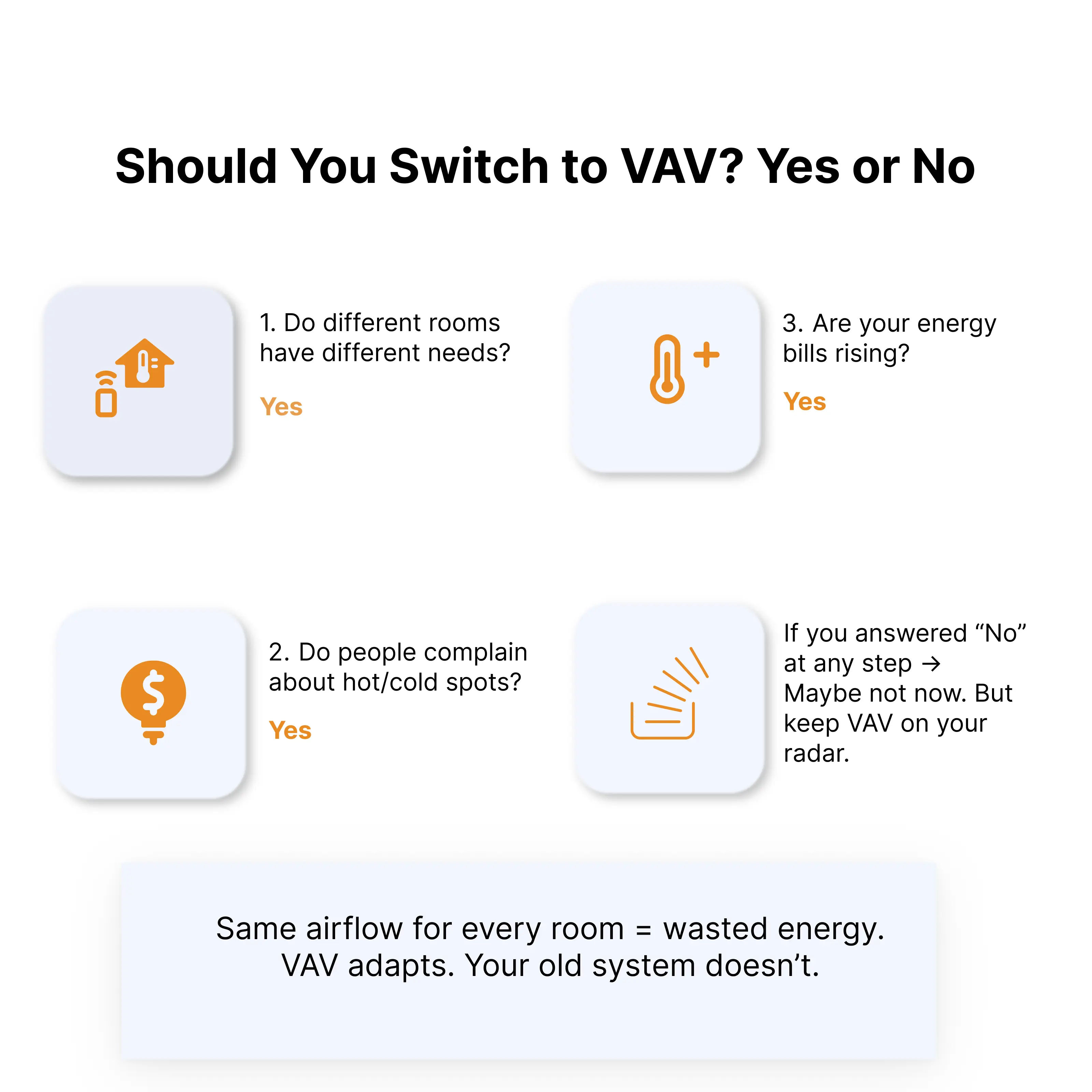views
In 2025, energy costs aren't just increasing, but they're racing. With HVAC systems accounting for nearly 32% of commercial buildings energy consumption, there’s more money disappearing through ductwork than they'd prefer to admit.
The positive side? Smarter systems are now stepping up. VAV or Variable Air Volume (VAV) configurations help companies reduce their HVAC expenses by up to 30% by adjusting airflow based on the room's requirements.
However, the field service industry isn't slowing down either. With estimates putting the global market's value at over USD 8.44 Bn by 2027, growing at a CAGR of 13.5%, businesses are turning to sophisticated tools, such as field service software that brings automation as well as scheduling and field visibility all under one roof.
In simple terms, it means that if the airflow in your building is becoming more efficient, your service operations must be, too.
What Is A VAV in HVAC?
Let's begin with the basics, however, not the boring kind.
VAV stands for Variable Air Volume. In HVAC terms, it's the controller of air conditioning systems (in an excellent way). In contrast to blasting out the exact amount of air throughout the time (like CAV, a similar system),
A VAV system can make smart decisions. It will deliver only the appropriate quantity of air, not less or more, by the real demands of each area. Think of it like a computer’s central processor, only instead of data, it’s managing air, and every room or zone has a "traffic cop," called the VAV box, HVAC, which decides how much air is allowed in, based on the temperature of the room.
Is the room too hot? The box opens and lets cool air in, or if it is cold, and blocks the flow. This means less wasted energy and delivers better comfort and smarter air systems that appear as if they have a brain. If you're running a huge office or an intelligent home, the VAV system provides you with control, effectiveness, and lower utility bills without all the hassles of the world.

VAV vs. CAV vs. VRF Systems
Welcome to HVAC showtime: CAV vs VAV vs. VRF. Three systems participate, and only one takes home the title of energy efficiency. It's VAV, however, let's keep it fair.
It ensures that the air is flowing at a constant speed. Are you looking to cool your space? It lowers the temperature of the air. Are you looking to increase the temperature? It turns up the heat. The airflow? It's never changing. It’s like that coworker who’s always on time, reliable, and needs no reminding.
This is a brief overview of the three major gamers within the HVAC world: CAV, VAV, and VRF, and how they compare.
1. CAV (Constant Air Volume):
- The same amount of air is circulated throughout the day regardless of temperature.
- The temperature is adjusted to match the ambient temperature of the air, not its amount.
- Simple set-up, lower cost of initial setup.
- Ideal for areas that have a single zone with constant use.
- Inefficient in energy use, it has fans running at full speed, even when they're not in use.
2. VAV (Variable Air Volume):
- The system adjusts the amount of air that is sent to each zone following the current demand.
- The dampers are used in each zone (via VAV box) to regulate the flow of air.
- Ideal for multi-zoned spaces such as schools, offices, or big homes.
- Increases comfort by setting the temperature for each room.
- More efficient in energy use, it reduces wear on equipment and helps save cash in the long term.
3. VRF (Variable Refrigerant Flow):
- Doesn't rely on ducts; instead relies upon refrigerant-based units for indoor use.
- Provides simultaneous cooling and heating across various zones.
- It is extremely quiet and flexible in layout.
- A high upfront cost and a more complicated installation.
- Ideal for luxury homes as well as tech campuses, as well as high-end retrofits.
.webp?updatedAt=1750672831909)
Benefits of VAV Systems
VAV systems provide you with the trifecta of HVAC control, comfort, as well as cost reductions. VAV systems don't just provide an upgrade in technology; they're a smarter way to manage your business. No matter if you're running a bustling office, a busy school, or an intelligent residence, VAV adjusts and delivers. The benefits go far beyond the control of temperature.
What makes VAV systems an MVP of modern HVAC installations? Let's take a look:
1. Energy Efficiency, which pays off
- VAV systems aren't just about blowing air; they consider it before doing anything.
- Adjusting airflow according to the requirements of the area, they can avoid over-conditioning and excessive fan use.
- That's lower costs for utilities and a cleaner footprint without losing comfort.
2. Personalized Zoning = Happier People
- Each zone or room gets its thermostat, meaning that the conference room could be Arctic while the CEO's workplace is like Miami, if that's their preference.
- No more warring over thermostats or air settings that are one-size-fits-all.
- Ideal for commercial areas, smart homes, office buildings, or any place where people share opinions.





















Comments
0 comment